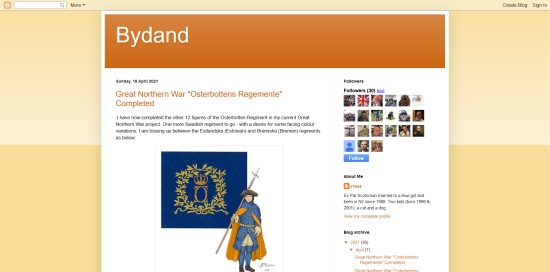
I didn't get much of a discussion about this, as there were folks in the way when we came by. All of the castings are inspected here, and then moved over to the bits area where they are ready to be packaged up. The picture below is a composite of three I took, and gives you an idea of the size of the bits area, and the number of parts available for packaging.

When clients make orders, the pieces are pulled, stuck into blisters, and sent on their merry way. In a move to cut costs, Reaper only gets the cardboard backing for the blisters, and uses machines they own for printing product information and bar codes. You can see the cards they use in one of the pictures, and the machine they use for printing in the other. My understanding is that they can do a lot of the maintenance on the machines they have in the shop without calling for outside assistance - another way they can keep costs low.


The next couple of pictures show where the product you see on the shelves or get through mail order comes together. Plastic covers for the blister packs are placed into the holes shown in the first picture below. The rest of the product is then added to the plastic container, and the cardstock for the blister is set in the guides sticking up out of the assembly. It's then run around the circle, and when it's run through the big machine, it goes "kerschlump" and the blister is sealed! Completed blisters are then placed in cardboard boxes, hand labeled, and moved over near the bits area for packing.


So there you have it — from green to retail product in several steps under one roof. Reaper's new facility is nice and well laid out. The only thing that was better were the people I met who worked there!








